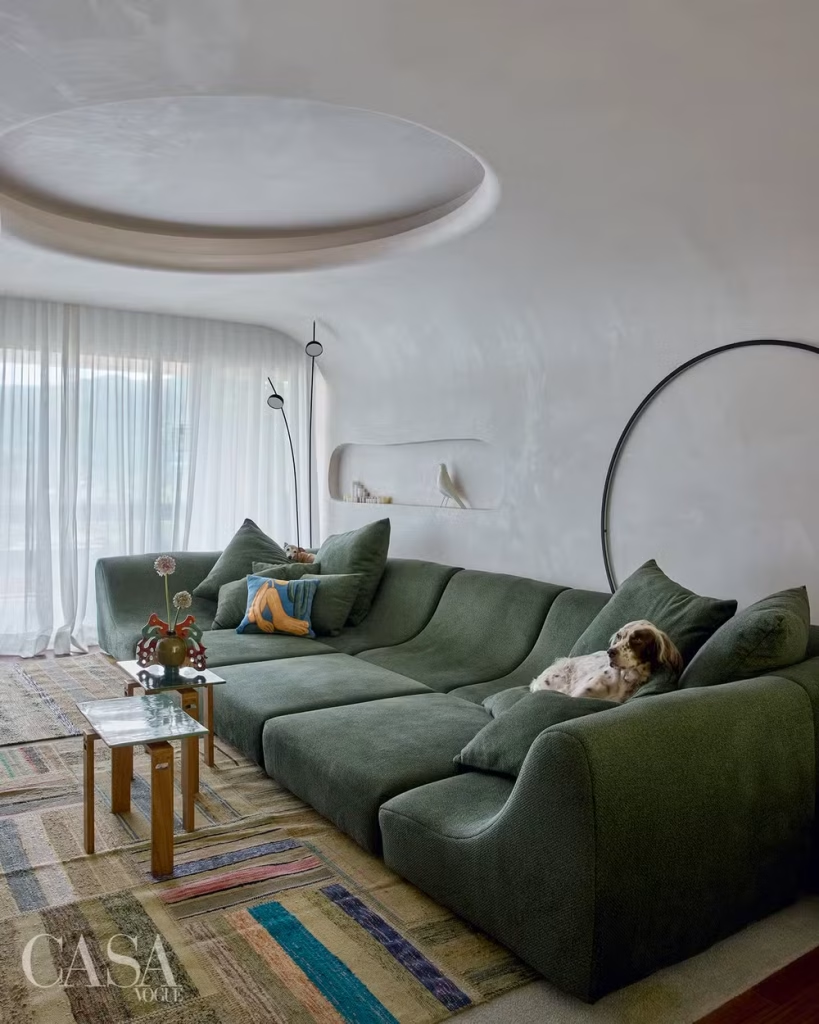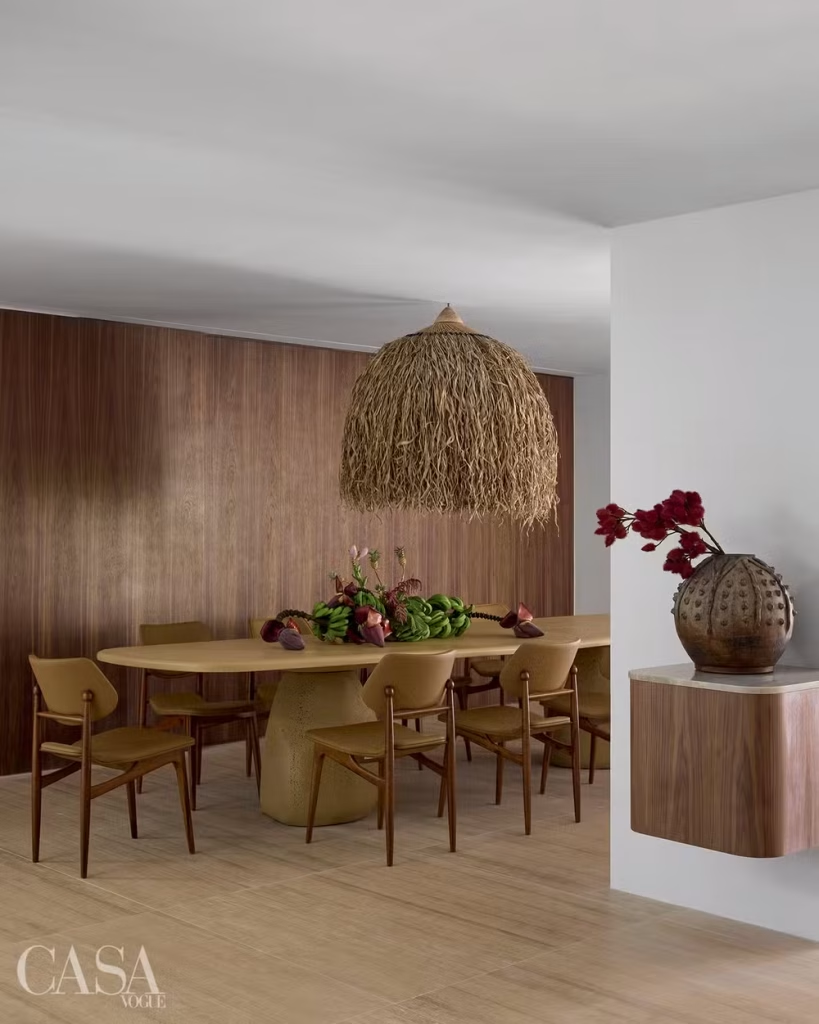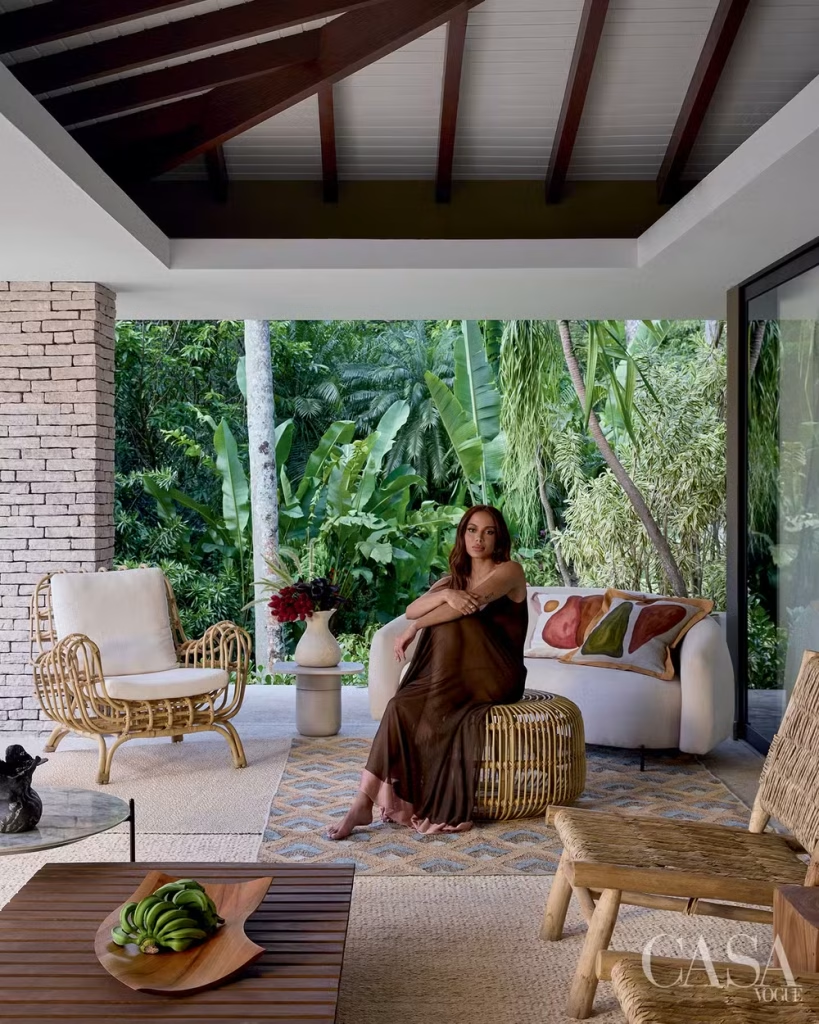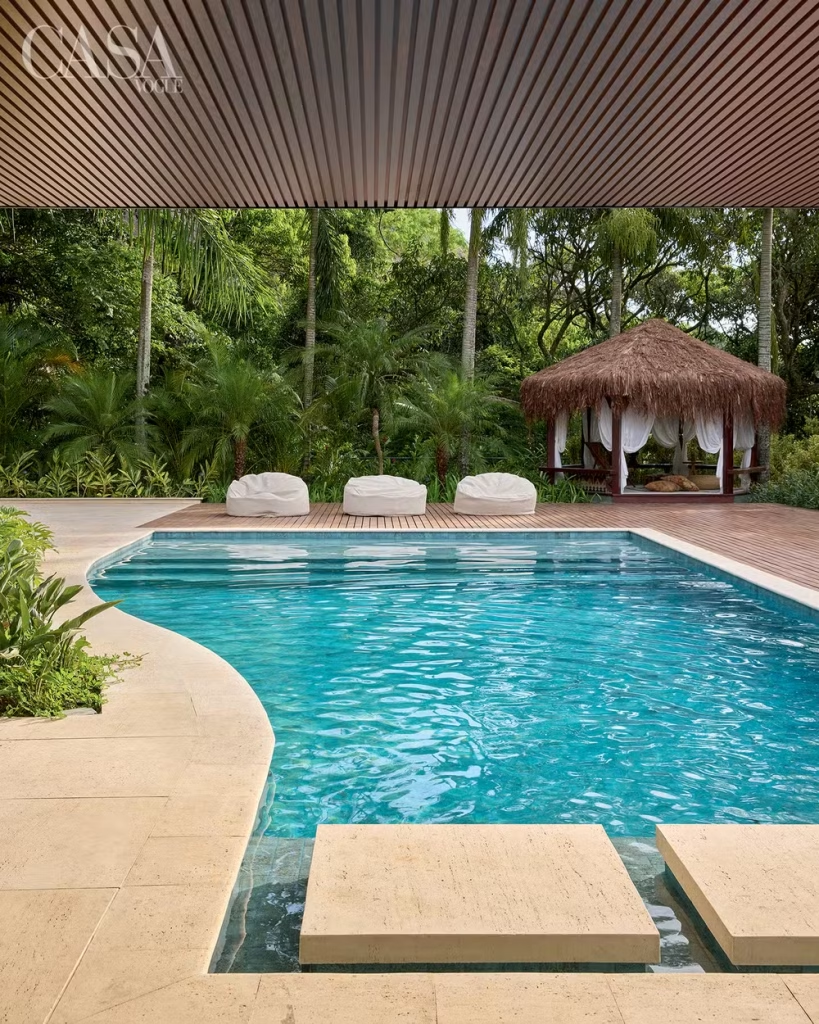Hidden in the lush hills of Rio’s Tijuca Forest, Anitta’s home feels worlds away from the spotlight. It’s a space where she finds peace, reconnects with her roots, and surrounds herself with meaning. When Anitta opened her doors to Casa Vogue, she wasn’t just showing off a fancy house. Instead, she was inviting people into her world, sharing a part of herself that most fans never get to see. By doing this, she gave everyone a chance to understand what really matters to her.
Designed in partnership with Studio Ro+Ca, the 1,500-square-meter house sits in the quiet neighborhood of Itanhangá, high above the city that shaped her. Everything reflects her energy, her culture, and her story.
This isn’t a sterile celebrity mansion. There’s no cold minimalism. No obsession with trends. Instead, every corner of the house is layered with meaning, memory, and intention. From handmade Amazonian clay pieces to Yoruba-inspired lighting, the house speaks the language of ancestry and authenticity.

Anitta said it was non-negotiable for her to live surrounded by greenery and wildlife, including saguis and her famous dogs, Plínio and Charlie. She explained that she needed a place to reconnect with nature and herself. According to her, she has changed a lot—she feels more mature, knows exactly what she wants, and enjoys spending more time at home with her family.
Walk through the front door, and the feeling is immediate. A burst of color fills the space—blue, orange, yellow—coming together in a large tile mural that shows children from Rio’s favelas painted as angels. It’s bold and emotional, the kind of art that grabs you before you even settle in.
For Anitta, who grew up in Honório Gurgel, it’s deeply personal. Not just decoration, but a memory. A tribute. A quiet statement about where she started and how far she’s come.
“It looks like an art gallery,” she said, but it feels like home.
Anitta’s living room feels calm and warm, filled with textures and materials that connect to the earth. Nothing feels flashy or out of place. Instead, she fills the space with personal touches. One of the most striking pieces is a sculpture created by women from the Amazon. It stands at the heart of the room, serving not just as decoration but as a symbol of female strength.
The furniture mixes comfort with heritage. A Mole armchair by Sergio Rodrigues invites people to sit and stay. Natural light pours in from wide windows, softened by the trees outside. She places crystals around the room to bring balance and peace.
Anitta didn’t just pick furniture and art for how they looked. She thought about the energy they carry. A spiritual guide helped her with this process, choosing the right places for the crystals and even giving advice from afar, without ever visiting the house in person.



“Our culture is a mix of the best the world has to offer. That’s what shaped Brazil. It’s this blend of ancestry and our own discoveries. We take things in, we give them a Brazilian twist, and we create something that’s completely ours. It’s rich in every possible way,” Anitta says.
Anitta designed the dining room to feel warm, grounded, and full of presence. She didn’t want it to be just another pretty room. She wanted it to carry meaning. The table is long and welcoming, always ready for big gatherings with friends and family.
What makes the room stand out is the custom light fixture hanging above the table. Inspired by an orisha, a powerful spiritual figure from Candomblé, the piece adds more than just style. It connects the space to Anitta’s Afro-Brazilian heritage and her personal spirituality. This choice shows how important it was for her to bring culture and meaning into every corner of her home.
The atmosphere in the dining room is warm and inviting. Natural materials like wood and clay mix with soft lighting to create a cozy environment. The space invites people to share stories, fill the air with laughter, and strengthen bonds over food. Anitta wanted this room to be a ritual space, where the act of eating becomes a shared experience that nourishes not only the body but also the spirit.
This dining area reflects the way Anitta views her life—full of connection, celebration, and respect for her roots. It is not a sterile place but a living, breathing part of the home where people gather to enjoy simple pleasures and create lasting memories.


Anitta’s bedrooms aren’t just places to sleep. Each one feels unique and personal, designed to welcome whoever stays there. One room has bunk beds, perfect for when friends or her team come to visit. It’s clear she wanted her home to be open to people, a spot where everyone feels welcome. Other guest rooms are simpler and softer, with calm colors and cozy beds that make it easy to relax after a long day.
But her own bedroom is on another level. This is where she goes to get away from everything. She wanted the space to feel safe and quiet, like being wrapped in a soft blanket. The bed sits low, almost disappearing into the floor, and the whole room is free from anything that might shout for attention. No loud colors or busy patterns. Just calm, gentle tones that make it easy to breathe and unwind.
They originally planned to cover the bathroom attached to the bedroom in rose quartz. That didn’t quite work out because finding enough of the stone was tricky. So, they chose a soft pink marble that still gives off the same romantic, feminine vibe she wanted. The marble shines softly, making the room feel peaceful but still a little special.
The singer is deeply spiritual, though not tied to a single religion. Her beliefs draw from Candomblé, Umbanda, astrology, and personal ritual. That shows up everywhere—from the lamp above the dining table to the placement of each stone in the garden.
She even had the pool designed intentionally small. Not because of budget or space. But because she didn’t want it to take over the backyard. For her, the garden is a place to connect with nature, not just swim laps. Less about luxury. More about balance.



Anitta stayed closely involved in every detail of the house project, even though her schedule kept her from being there in person. Countless messages and voice notes were exchanged on her phone, many of which went viral on social media, marking the journey that led to an unlikely scene: determined to create her dream home, she downloaded a modeling app, taught herself how to use it, and “designed” the project exactly the way she wanted.
“I only visited the site three times during the whole process,” she recalls. “That’s just how I am. I’m always in a hurry and very controlling. The fact that the architects were patient with me and my lack of time was exceptional. And the most important thing is that the house turned out amazing and far from ordinary,” she says.
Every corner of the house holds something important. Art pieces aren’t just decoration—they carry stories and connections to Anitta’s roots and beliefs. Spirituality isn’t an afterthought either; it’s woven into the very design of the home. From the lighting that honors ancestral spirits to the crystals placed carefully around rooms, faith and intention are part of the foundation.
Each room was built with a purpose, whether it’s a place for celebration, reflection, or simply resting. There’s a sense that everything in the house is alive, that it breathes alongside her and the people she loves.


Anitta’s house in Rio is a reflection of everything she’s built her career on—identity, reinvention, resilience, and a relentless pride in her roots. It’s one of the few celebrity homes that doesn’t feel performative. It feels lived in. Loved. Protected.
It’s an invitation to see a side of Anitta that rarely appears in public—a glimpse into what grounds her and what matters most in her life. It’s not about fame or glamour, it’s about the real person behind it all.
If fame stripped her of normal life, this house gives it back.









Leave a Reply